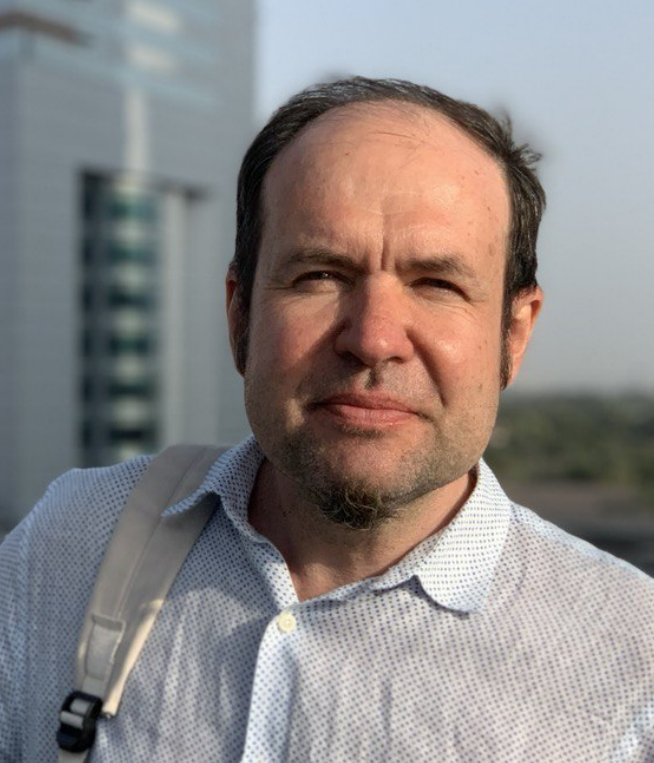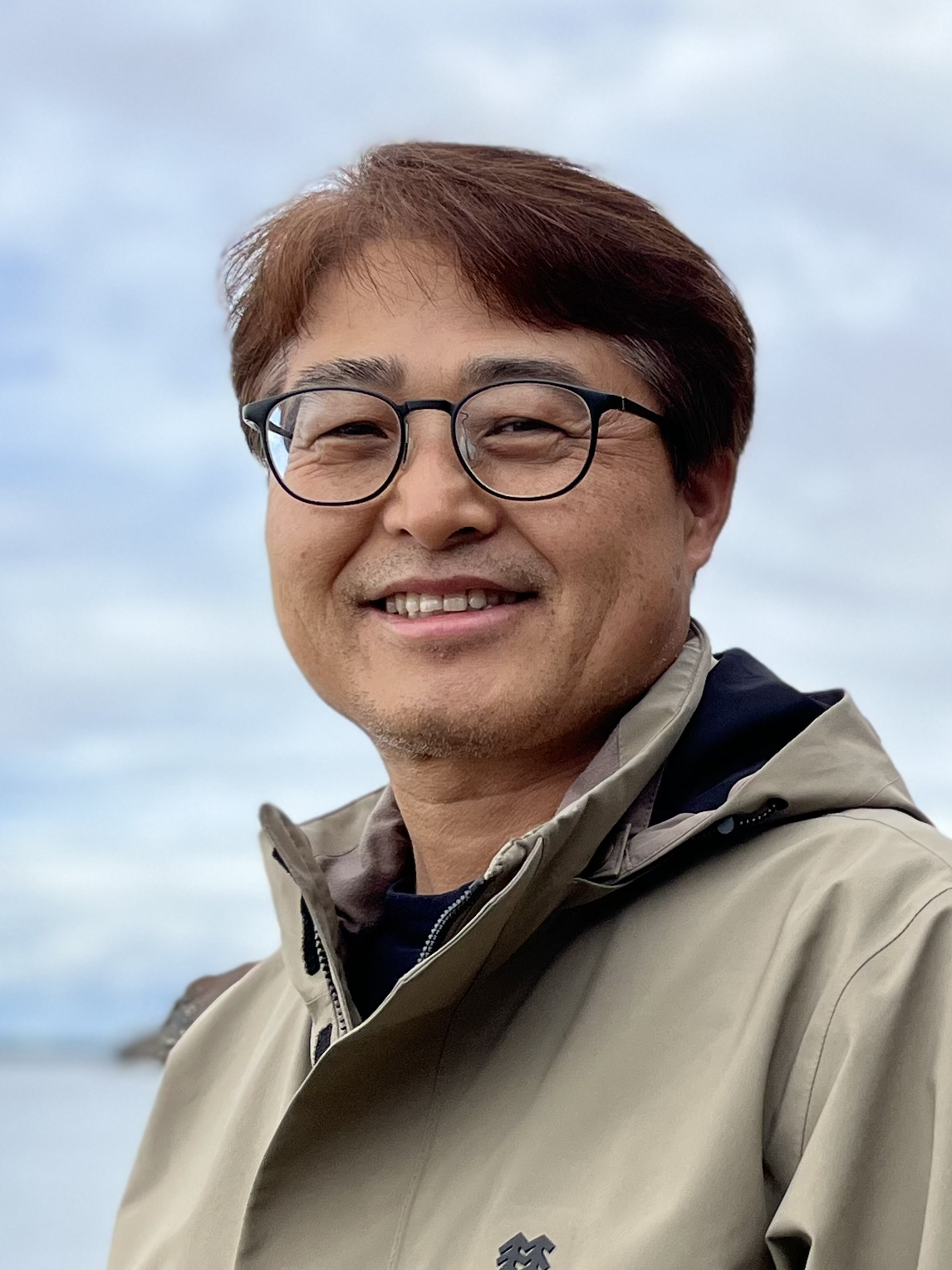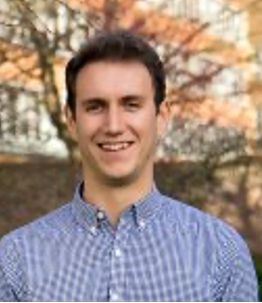Kolloquiumsprogramm
Das Kolloquium wird in Zusammenarbeit mit dem Forschungsverbund VINAR und der GeoSphere Austria (früher ZAMG) durchgeführt.
Alle Vorträge sind ohne Anmeldung öffentlich zugänglich!
Datum: Dienstags von 16:45 bis 18:15 Uhr
Raum: 2F513 (Exner-Raum), Josef-Holaubek-Platz 2, UZA 2, 1090 Wien und online!
-
03/10/2023 - Andrey SKOROKHOD: "Atmospheric methane over northern Eurasia: variations, sources, and chemistry"

© Skorokhod Andrey SKOROKHOD (University of Vienna)
In recent years we paid significant attention to the different aspects of methane's behavior in the lower atmosphere over the Eurasia. Study of its variations and trend dynamics on base of ground-based and satellite observations, as well as of large-scale modeling allowed us to make curtain conclusions about contribution of different sources to observed methane concentrations over northern Eurasia. The results presented in this report show that dramatic growth of methane content in the atmosphere after 2007 not only induced the temperature growth but also could provoke changes in the atmospheric photochemical system that has reflected on other trace gases (for instance, ozone and carbon monoxide).
Tuesday, 16.30h to 18.00h
Location: Room 2F513, (Exner-Raum), Josef-Holaubek-Platz 2, UZA 2, 1090 Vienna and online!
Post-colloquium at 18:30, join us for food and drinks with our speaker at Brandauers Bierbögen, Heiligenstädter Str. 31, Stadtbahnbögen, 1190 Wien.
-
10/10/2023 - Gholamhossein BAGHERI: "From fortunate drop to unfortunate drop"

© Bagheri Gholamhossein BAGHERI (Max Plank Institute for Dynamics and Self-organization)
All around us there are numerous examples of particles in fluids. In our home or office, where we spend 90% of our time, to the atmospheric boundary layer, the true home of us all. Particles come in a variety of shapes, compositions and sizes that greatly affect our lives by influencing the quality of the air we breathe or the weather and climate. There are highly irregular volcanic particles, non-spherical microplastics, spherical cloud droplets, structured ice crystals and pathogenic particles released upon exhalation, to name just a few examples. In this talk I will take you on a journey through studying such particles in the lab or in the field and the instruments we make to study them. I will talk about the unsolved mystery of the fortunate drop that can initiate rain in warm clouds, to the thousands of kilometres long journey of microplastics from the heart of Europe to the Arctic, and the unfortunate drop that can lead to the transmission of airborne diseases.
Tuesday, 16.30h to 18.00h
Location: Room 2F513, (Exner-Raum), Josef-Holaubek-Platz 2, UZA 2, 1090 Vienna and online!
Post-colloquium at 18:30, join us for food and drinks with our speaker at Brandauers Bierbögen, Heiligenstädter Str. 31, Stadtbahnbögen, 1190 Wien.
-
17/10/2023 -Tae-Seob KANG: "Microearthquakes indicating the physical and mechanical states of the crust"

© Kang Tae-Seob KANG (Pukyong National University)
Depending on the relationship between the magnitude and frequency of earthquakes, which follow a power law like various phenomena in nature, the relatively large number of small earthquakes can provide detailed information about the geometric properties of active faults and the state of acting stress. The rocks' strength profile and frictional properties are closely related to seismic activity, of which microearthquakes are indicators of physical driving mechanisms promoting earthquake triggering. Various examples in a low seismicity region are introduced with the results of estimating the seismic velocity, inelastic properties, stress change patterns, etc., based on the background noise and high-precision microearthquake observation and analysis obtained through dense seismic networks.
Tuesday, 16.30h to 18.00h
Location: Room 2F513, (Exner-Raum), Josef-Holaubek-Platz 2, UZA 2, 1090 Vienna and online!
Post-colloquium at 18:30, join us for food and drinks with our speaker at Fischerbräu, Billrothstraße 17, 1190 Wien.
-
24/10/2023 - Daniel BÄUMER: "Clouds and precipitation in midlatitude cyclones: new asymptotic models"
Daniel BÄUMER (University of Vienna)
The systematic incorporation of moisture into models for large-scale atmospheric flow, like the well-established quasigeostrophic (QG) theory, presents many unique challenges. This is particularly apparent when the QG equations are connected to the planetary boundary layer, where the relative strength and character of moist processes change drastically.
In this talk, we first introduce the recent extension of the classical QG-Ekman model to a triple-deck boundary layer theory, featuring a novel intermediary layer called the diabatic layer (DL). We then discuss the crucial role of mesoscale dynamics in the parameterization of condensation and sketch their incorporation into the preexisting model equations.
The remainder of the talk will be devoted to practical implications: in particular, we want to discuss how an analysis of the resulting equations might contribute to our theoretical understanding of fronts.Tuesday, 16.30h to 18.00h
Location: Room 2F513, (Exner-Raum), Josef-Holaubek-Platz 2, UZA 2, 1090 Vienna and online!
-
07/11/2023 - Eva HOLTANOVA: "Uncertainties of climate model outputs: from global to local scale"

© Haltanova Eva HOLTANOVA (Charles University Prague) / PERUN project website
The approaches to uncertainty assessment for the new generation of climate change scenarios over the Czech Republic incorporated within the PERUN project will be presented. Further related topics, e.g. internal climate variability assessment as well as issues connected to comparison of model outputs to observed data will be also discussed.
Tuesday, 16.30h to 18.00h
Location: Room 2F513, (Exner-Raum), Josef-Holaubek-Platz 2, UZA 2, 1090 Vienna and online!
Post-colloquium at 18:30, join us for food and drinks with our speaker at Brandauers Bierbögen, Heiligenstädter Str. 31, Stadtbahnbögen, 1190 Wien.
-
21/11/2023 - Gernot GEPPERT: "Operational (surface) data assimilation at Deutscher Wetterdienst (DWD)"
Gernot GEPPERT (DWD)
DWD's global and regional numerical weather prediction systems employ a number to tools for atmospheric, land, and sea surface data assimilation. I will briefly introduce the the global and regional modelling and data assimilation systems and then focus on the analyses for sea surface temperature, snow depth, and soil moisture. I will present the state of the current analyses, recent developments towards new surface analyses, and the recently introduced tuning of surface parameters based on data assimilation.
Tuesday, 16.30h to 18.00h
Location: Room 2F513, (Exner-Raum), Josef-Holaubek-Platz 2, UZA 2, 1090 Vienna and online!
-
09/01/2024 - Luke WESTERN: "Why emissions of some ozone-depleting substances are still increasing" ONLINE ONLY

© Western Luke WESTERN (University of Bristol, Green Gods)
The production of most long-lived ozone depleting substances have been, or are being, phased out under the Montreal Protocol. Despite the controls, emissions of some ozone-depleting substances are still increasing. Here I will discuss the reasons for these seemingly contradictory trends and their implications for stratospheric ozone recovery and climate.
Tuesday, 16.30h to 18.00h
Location: Online only!
-
16/01/2024 - Robin SCHOEMAKER: "Atmospheric Transport Modeling at CTBTO"
Robin SCHOEMAKER (CTBTO/IDC)
This talk will address how atmospheric transport modelling (with the FLEXPART model) is used at the Comprehensive Nuclear-Test-Ban Treaty Organization (CTBTO).
Tuesday, 16.30h to 18.00h
Location: Room 2F513, (Exner-Raum), Josef-Holaubek-Platz 2, UZA 2, 1090 Vienna and online!
-
23/01/2024 - Nora SCHENK: "Particle Filter Methods for Numerical Weather Prediction"
Nonlinear ensemble data assimilation methods like particle filters aim to improve the numerical weather prediction (NWP) and the uncertainty quantification in a non-Gaussian setting. But classical particle filters usually lead to filter divergence or filter collapse in very high dimensional systems. In this talk, I present two localized versions which overcome these problems and can be applied in NWP systems.
Tuesday, 16.30h to 18.00h
Location: Room 2F513, (Exner-Raum), Josef-Holaubek-Platz 2, UZA 2, 1090 Vienna and online!
Post-colloquium at 18:30, join us for food and drinks with our speaker at Brandauers Bierbögen, Heiligenstädter Str. 31, Stadtbahnbögen, 1190 Wien.
-
30/01/2024 - Derek SCHUTT: "Flow, composition and evolution of tectonic plates and deeper mantle"
Derek Schutt (Colorado State University)
Abstract will follow
Tuesday, 16.30h to 18.00h
Location: Room 2F513, (Exner-Raum), Josef-Holaubek-Platz 2, UZA 2, 1090 Vienna and online!
